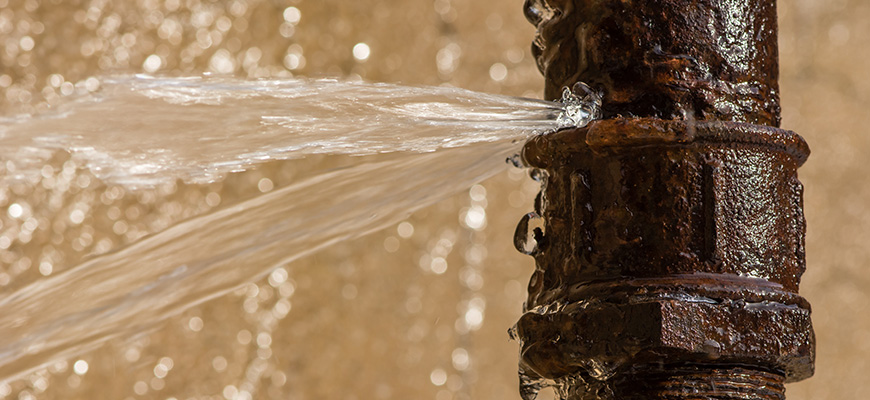Is your water softener behaving strangely? Are you getting the feeling that it might be on the verge of giving up? Don’t ignore the signs! In this article, we will discuss eight warning signs that indicate it is on the brink of failure. Understanding these signs can help you address the issue before it escalates into a costly problem.
Whether your water softener is making strange noises, producing hard water, or simply not working efficiently, it’s important to pay attention. Ignoring these warning signs can lead to clogged pipes, damage to appliances, and increased utility bills.
Our expert guide will walk you through each warning sign and explain what it means for the health of your water softener. By knowing what to look for, you can take proactive steps to prevent further damage and costly repairs.
Don’t let a failing water softener impact the quality of your water and your daily life. Read on to discover the warning signs that could save you time, money, and frustration.
Why is water softening important?
Water softening is a process that removes minerals, such as calcium and magnesium, from your water supply. These minerals can cause a range of problems in your home, from limescale buildup on fixtures and appliances to dry skin and dull hair. By softening your water, you can extend the lifespan of your appliances, reduce energy consumption, and improve the overall quality of your water.
How does a water softener work?
Before we dive into the warning signs, let’s first understand how a water softener works. A typical water softener consists of two main components: a resin tank and a brine tank.
The resin tank contains small resin beads that are coated with sodium ions. When hard water enters the resin tank, the resin beads attract the calcium and magnesium ions, exchanging them for sodium ions. This process, known as ion exchange, effectively removes the minerals from the water, leaving it soft and free of impurities.
The brine tank is where the water softener regenerates itself. It contains a highly concentrated salt solution, also known as brine. During the regeneration cycle, the brine is flushed through the resin tank, replacing the calcium and magnesium ions with sodium ions once again. This allows the resin beads to continue softening the water.
Now that we have a basic understanding of how water softeners work, let’s explore the warning signs.
Warning sign 1: Decreased water pressure
One of the first signs that your water softener may be failing is a noticeable decrease in water pressure throughout your home. If you’ve noticed that your showerhead is no longer providing a strong, steady stream of water or that your faucets are taking longer to fill a sink, it could be a sign that your water softener is not functioning properly.
A decrease in water pressure can occur when the resin beads in the resin tank become coated with minerals and are no longer able to effectively remove them from the water. As a result, the flow of water is restricted, leading to decreased water pressure.
If you’ve ruled out other potential causes of decreased water pressure, such as a clogged pipe or a faulty valve, it’s worth checking your water softener. A professional inspection can help determine if the resin beads need to be cleaned or replaced, or if there is a more serious issue with the water softener itself.
Warning sign 2: Mineral buildup on fixtures and appliances
Another warning sign that your water softener may be on the brink of failure is the presence of mineral buildup on fixtures and appliances. Hard water contains high levels of minerals, such as calcium and magnesium, which can leave behind a white, chalky residue on surfaces.
If you’ve noticed a buildup of mineral deposits on your faucets, showerheads, or other fixtures, it’s likely that your water softener is not effectively removing these minerals from the water. Over time, this mineral buildup can lead to clogged or corroded pipes, reduced water flow, and damage to appliances, such as dishwashers and washing machines.
To determine if your water softener is the culprit, try cleaning the affected fixtures and appliances. If the mineral buildup returns shortly after cleaning, it’s a clear sign that your water softener is not doing its job. It may be time to have a professional inspect and service your water softener to prevent further damage.
Warning sign 3: Hard water spots on dishes and glassware
If you’ve been noticing hard water spots on your dishes and glassware, it’s a strong indication that your water softener is not functioning properly. These spots are caused by the minerals in hard water, which can leave behind a hazy residue when the water evaporates.
When a water softener is working correctly, it removes these minerals from the water, preventing the formation of hard water spots. However, if your water softener is failing, it may not be effectively softening the water, leading to the unsightly spots on your dishes and glassware.
To test if your water softener is the cause, try washing a few dishes by hand with softened water and compare the results to those washed with unsoftened water. If the dishes washed with softened water come out spot-free while the others have hard water spots, it’s a clear indication that your water softener needs attention.
Warning sign 4: Dry and itchy skin after showering
One of the benefits of having a water softener is that it can help alleviate dry and itchy skin caused by hard water. Hard water can strip the skin of its natural oils, leaving it dry, irritated, and prone to conditions such as eczema and psoriasis.
If you’ve noticed that your skin feels dry and itchy after showering, despite using moisturizers and gentle soaps, it could be a sign that your water softener is not effectively softening the water. The minerals in hard water can leave a residue on your skin, preventing it from retaining moisture and leading to dryness and irritation.
To determine if it is the culprit, try taking showers in different locations, such as a hotel or a friend’s house, and see if your skin feels different afterward. If you notice a significant improvement in the condition of your skin, it’s likely that it is not doing its job.
Warning sign 5: Increased soap usage
If you find yourself using more soap than usual, whether it’s for laundry, dishes, or personal hygiene, it could be a sign that your water softener is not functioning properly. Hard water requires more soap to create a lather and effectively clean, as the minerals in the water interfere with the cleaning process.
When a water softener is working correctly, it removes these minerals from the water, allowing soap to lather more easily. However, if it is failing, it may not be effectively softening the water, leading to increased soap usage and less effective cleaning.
If you’ve noticed that your soap is not lathering well or that you need to use more soap than usual to achieve the desired results, it’s worth checking. A professional inspection can help determine if repairs or maintenance are needed.
Conclusion and next steps
In conclusion, it’s essential to pay attention to the warning signs that indicate your water softener is on the brink of failure. Decreased water pressure, mineral buildup on fixtures and appliances, hard water spots on dishes and glassware, dry and itchy skin after showering, and increased soap usage are all indications that your water softener may not be functioning properly.
Ignoring these signs can lead to a range of problems, from clogged pipes and damaged appliances to increased utility bills and poor water quality. By addressing the issue early on, you can prevent further damage and costly repairs.
If you’ve noticed any of these warning signs, it’s recommended to have a professional inspect and service your water softener. They can determine the root cause of the problem and provide the necessary repairs or maintenance to ensure things are functioning optimally.
Don’t let a failing water softener impact the quality of your water and your daily life. Take action today and enjoy the benefits of soft, clean water throughout your home.


